Cataloging the Stephen Lang Negative Collection
A Collections Chronicles Blog
By Jasmine Mukai-McGreen, Archival Collections and Rare Book Intern
May 29, 2025
It’s hard not to feel like a detective from an Agatha Christie novel while working on cataloging a collection. As archivists, we try to piece together research and notes about the objects, to hopefully uncover the history and other information that can help others learn more about the collection.
This past Winter/Spring 2025, as the Seaport Museum’s Archival Collections and Rare Books Intern, I took on the cataloging and digitization of a newly-acquired collection of film negatives by American photographer Steven Lang (b. 1939). The 80 film negatives contained in this collection offer an intimate view of tugboats in all aspects of their daily work. The images show the tugboats while they are working, at rest, and even being repaired all along the East Coast of the United States. This collection also includes images of other types of boats including barges, fishing vessels, schooners, and lightships. The photos spotlight the beauty of the vessels and the variance in their appearance, and they have promoted research, discovery, and inspiration within the Seaport Museum.
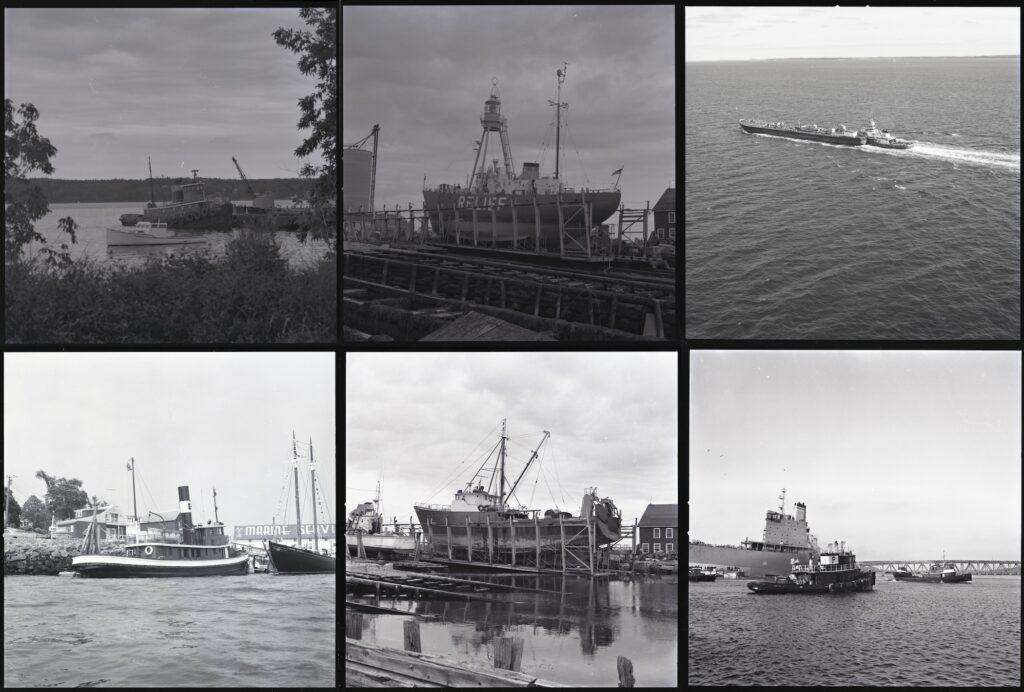
Six examples from the collection. 120 mm Kodak Safety Film. Gift of Stan Willhight 2024.001
When I started my internship this past January, I had never processed a collection completely. I had worked on several different stages of processing a collection, including cataloging, creating a finding aid,[1]A finding aid is a device that collections use to explain why certain decisions were made when processing a collection; this can help future archivists make more informed decisions about how the … Continue reading and doing research, but this was my first experience working with a collection from start to finish—which was a great educational opportunity. I was very excited to work on this collection, as I have experience working with film negatives and film photography as a hobby; and was also excited to do research, as I love diving into the history of items.
I have always thought that tugboats have such a classic look and really like seeing them around New York Harbor. While I didn’t have a lot of technical knowledge about tugboats, I was well acquainted with their use in firefighting and the evacuation of people, because my father was part of the FDNY and a first responder during 9/11. It was so nice to work in the archives for this project, learn more about tugboats, and see glimpses of the City from the past, just like in the stories my dad told me about growing up in the 1970s.
The negatives were donated at the end of 2024 and were originally stored in plastic sleeves, which were placed in acid-free envelopes once they arrived at the Museum. Based on the names on the plastic sleeve, I reorganized all the pictures in alphabetical order, and kept track of them on a spreadsheet.
Approaching an Archival Collection
This project took about four months from start to finish. I began by looking over the processing plan and all of the notes written by Martina Caruso, the Seaport Museum’s Director of Collections and Exhibitions, and Elena Abou Mrad, the Archives and Special Collections Specialist. Elena and I worked closely together while processing the collection, and she helped me refine my processing decisions.
When the negatives were donated to the Museum in late 2024, they arrived stored in plastic sleeves provided by the donor.[2]Plastic sleeves for the most part should not be used when storing photographs. There can be issues with the plastic being acidic, which can trap moisture and create a microenvironment that can affect … Continue reading They were moved to acid-free[3]Acidic materials contribute to degradation of objects in museums, most objects do best in neutral to alkaline environments. To best curb the degradation we use special material for housing that is … Continue reading envelopes once they arrived at the Museum. Based on the names on the plastic sleeve, I reorganized all the pictures in alphabetical order, and kept track of them on a spreadsheet.
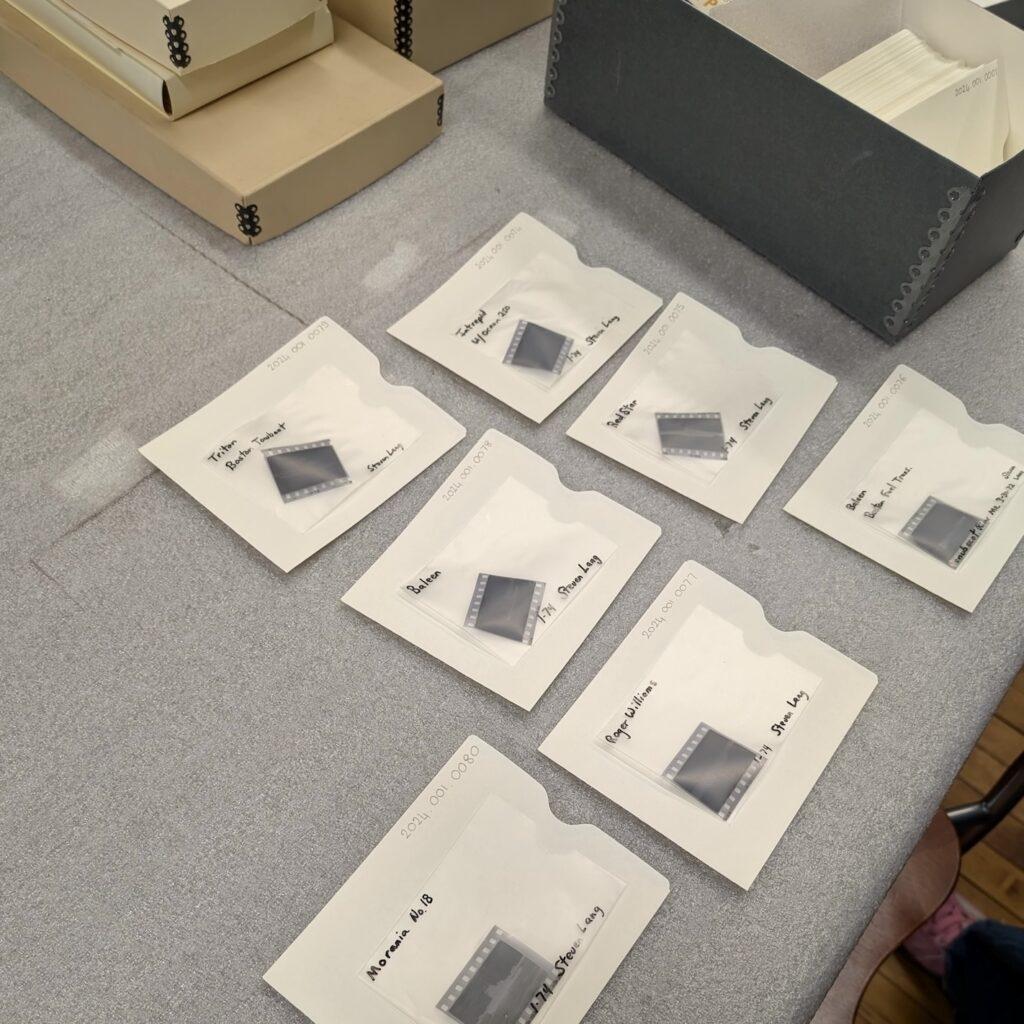
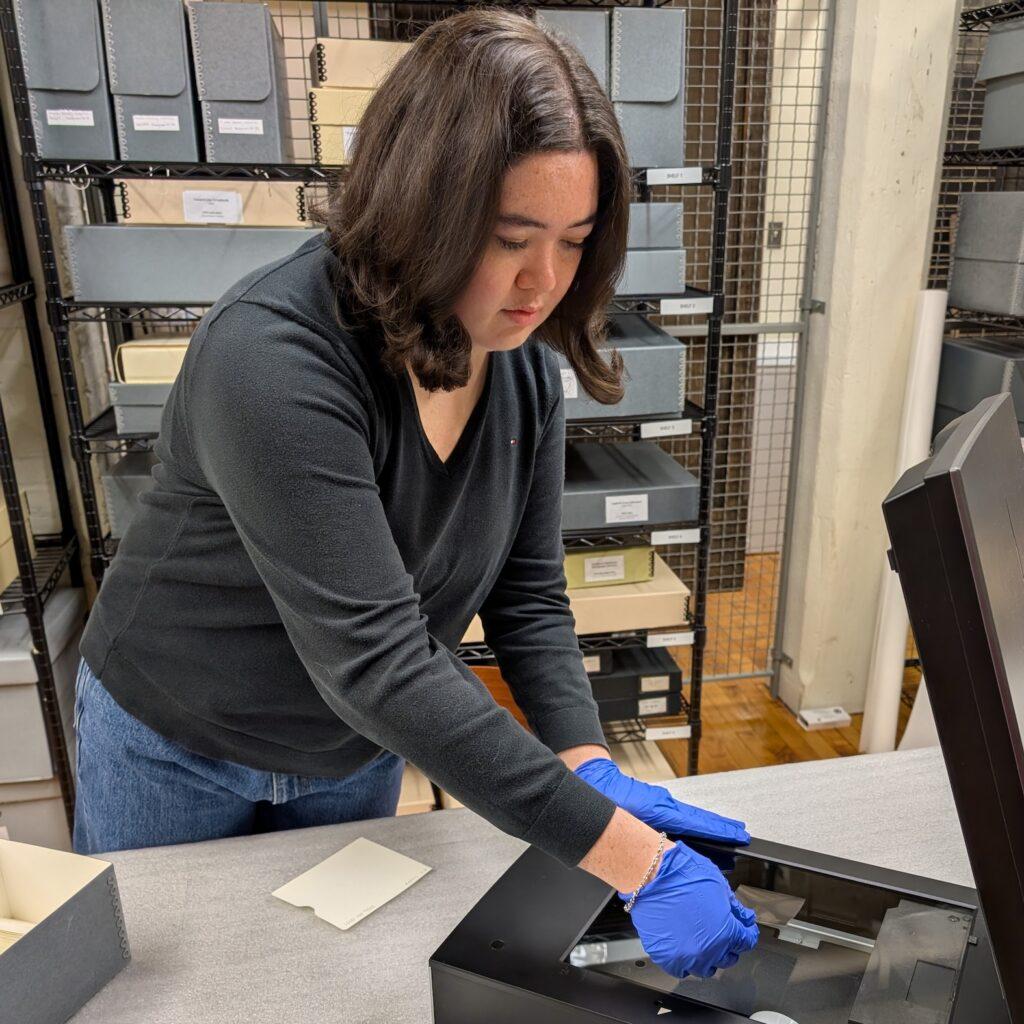
After creating the spreadsheet, I worked in sets of ten to fifteen negatives per week. I scanned each negative, documented the original plastic sleeve, measured the dimensions, and examined the condition.
Then, the cataloging process began: I entered the name of the tugboat into the database entry and added where and when the photo was taken (if that information was known). I also wrote down my research notes for almost every entry and a detailed description of each photo. After documenting the description on the plastic sleeve, I disposed of the sleeve. I then rehoused the collection in a more appropriately-sized box, so the negatives wouldn’t shuffle around, which can cause damage. At the end of the project, I wrote a finding aid for the collection.
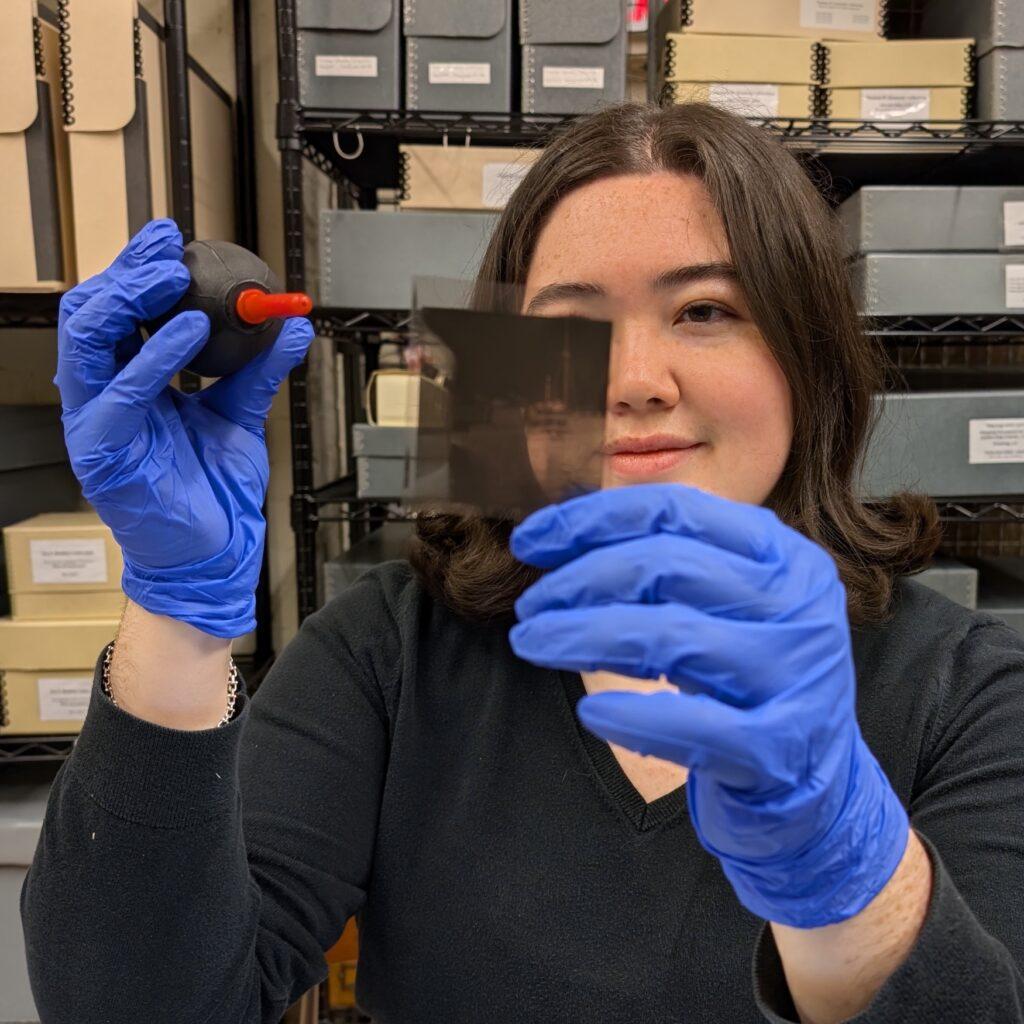
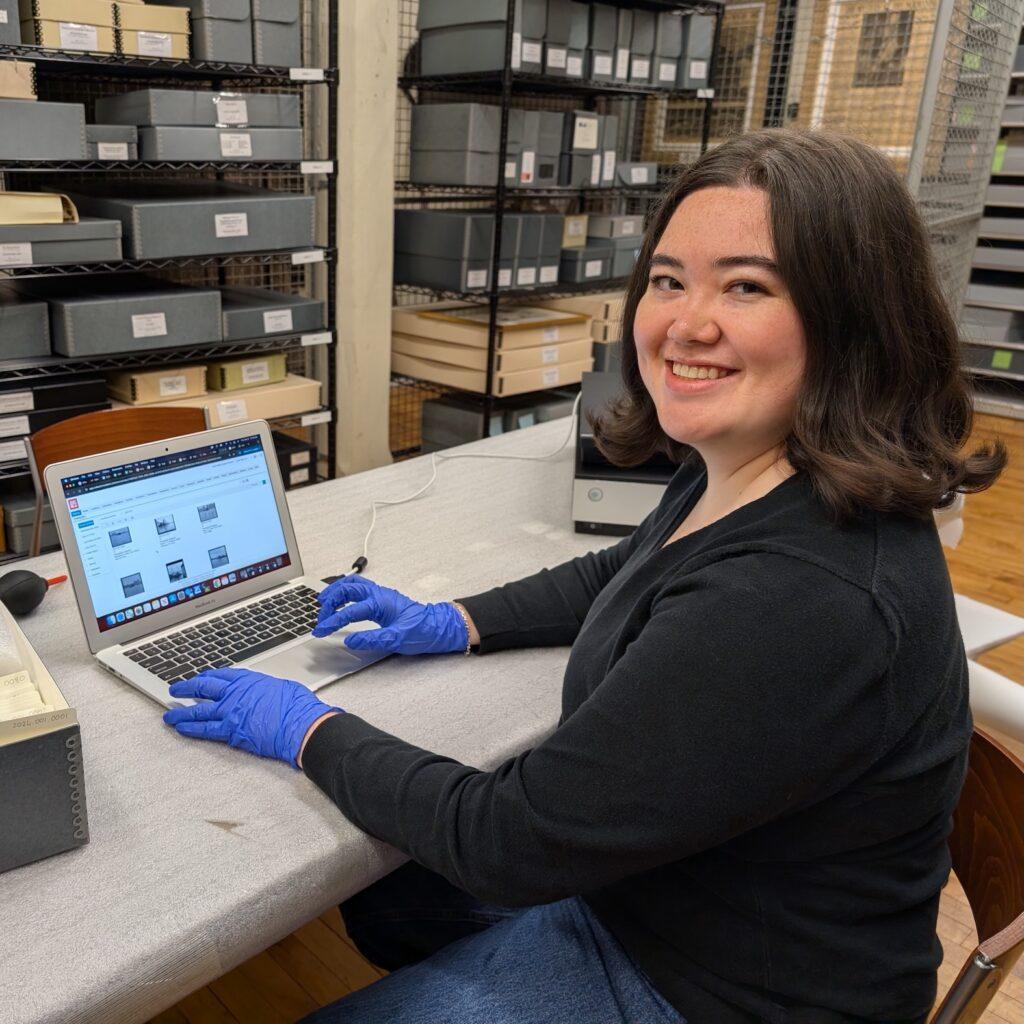
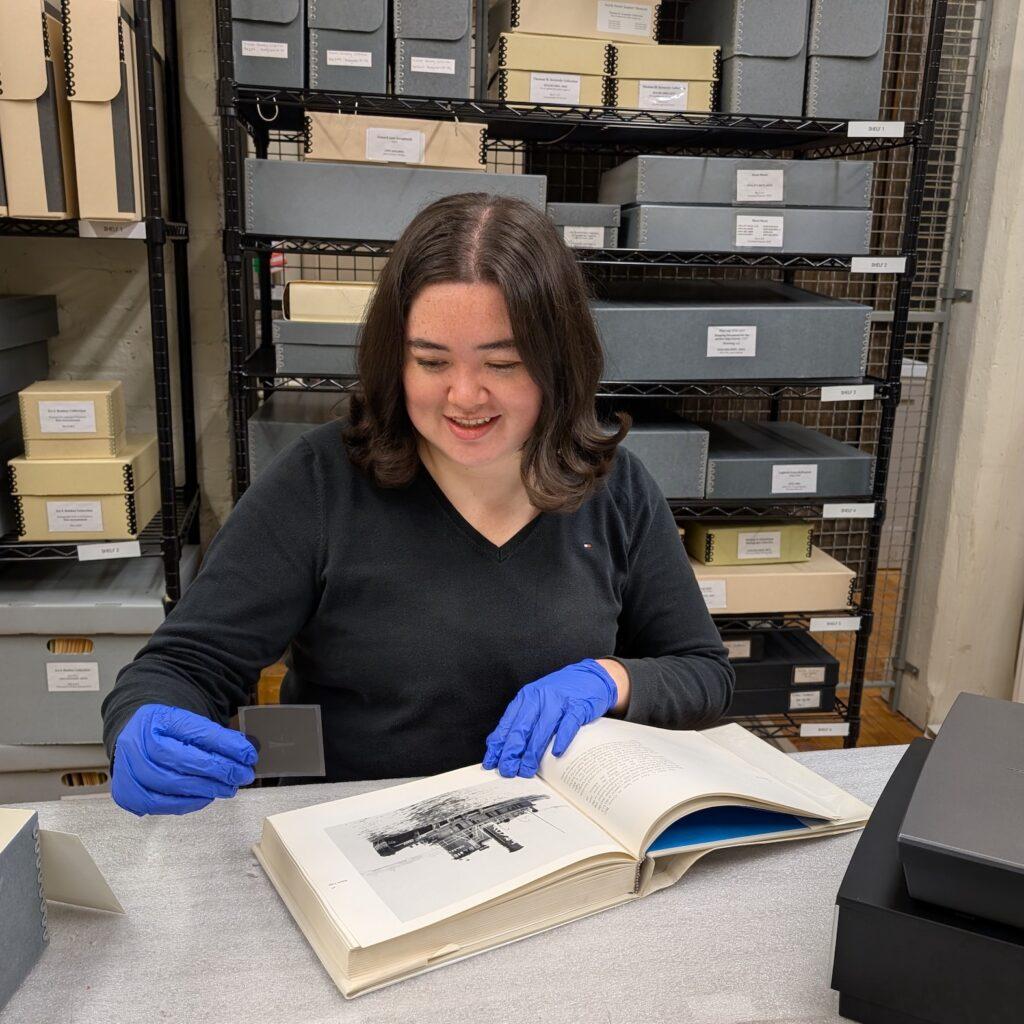
Highlights and Discoveries
The Case of the Unidentified Tugboat
When I started scanning the last negatives in the collection, I noticed that a lot of the 35mm negatives were highly warped, which affected the scan quality. After discussing the issue with Elena, I tried using a film area guide for scanning, which resulted in better-quality scans. From the initial scans, a few of the 120mm negatives had also appeared underexposed, and some details were obscured, so we decided to scan those images in the film area guide as well. When we realized that the quality of the scan had improved so significantly, we decided to re-scan the whole collection in the film area guide, this allowed us to see details that we hadn’t noticed before—as you can easily see below in this comparison between a negative scanned without and with this important scanner accessory.
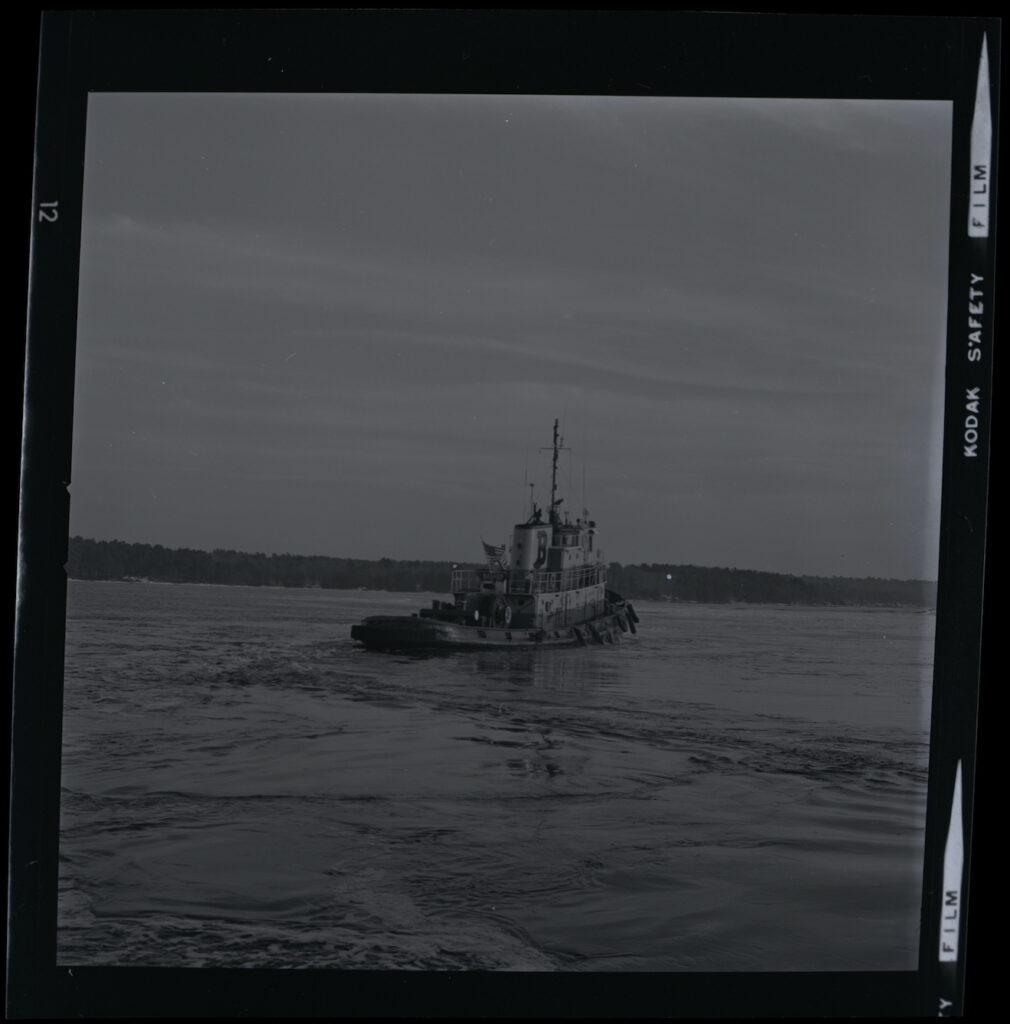
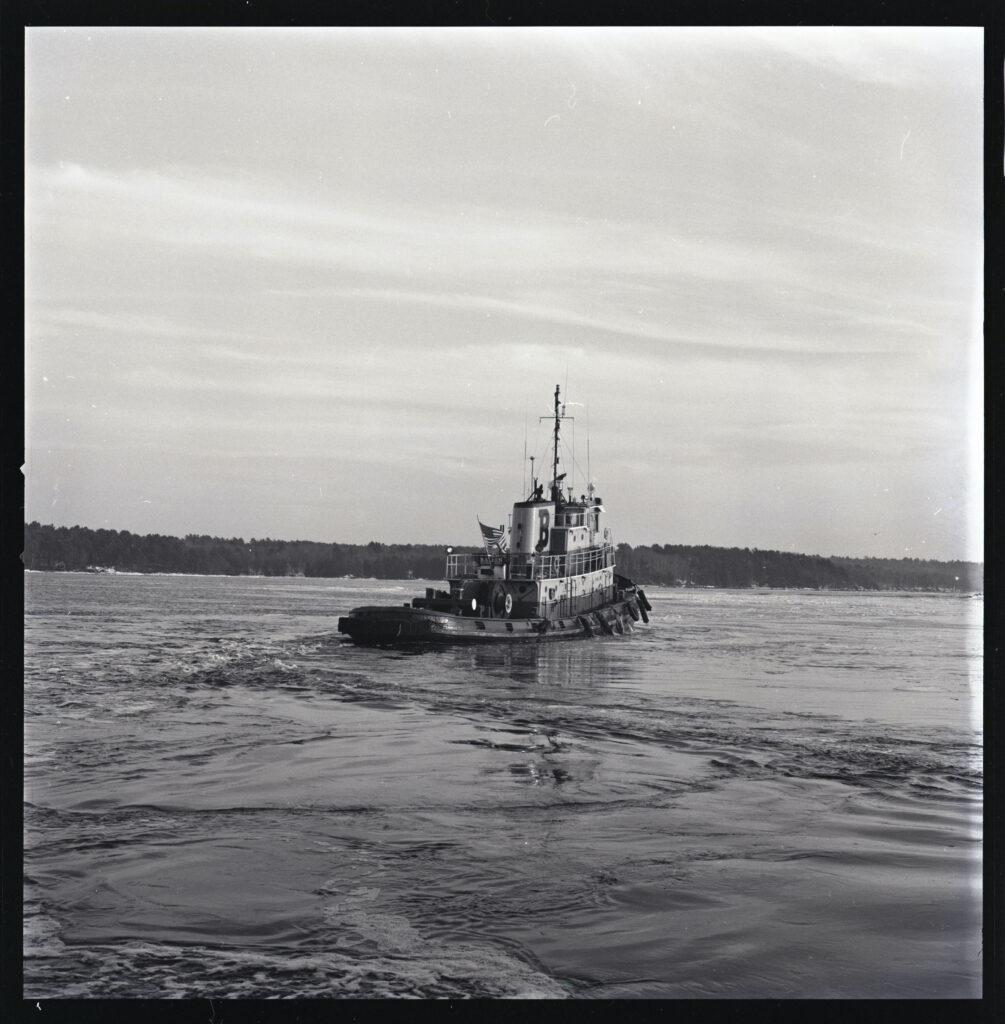
Steven Lang (American, born 1939), Baleen, January 26, 1974. 120 mm Kodak Safety Film. Gift of Stan Willhight 2024.001.0002
Left: Negative digitized without the film area guide
Right: Negative digitized with the film area guide
One tugboat negative in the collection made me feel exactly like Hercule Poirot by the time I finished doing research: on the plastic sleeve, the name was simply missing. I had next to no information about the tugboat from the beginning: just the location, indicated only as “NY.” However, the typical New York City skyline was not in the background, which would have easily confirmed that the vessel was in New York Harbor. There had been issues with mislabeled information on the sleeves, so I wanted to use the objects in the photo to verify the information. I could see a cliff face with houses atop, with a train on railroad tracks at the bottom of the cliff. There is a warehouse on the left side of the image where you can see a partial name “[…]Kirk Central System,” but I was still unable to find information about the location.
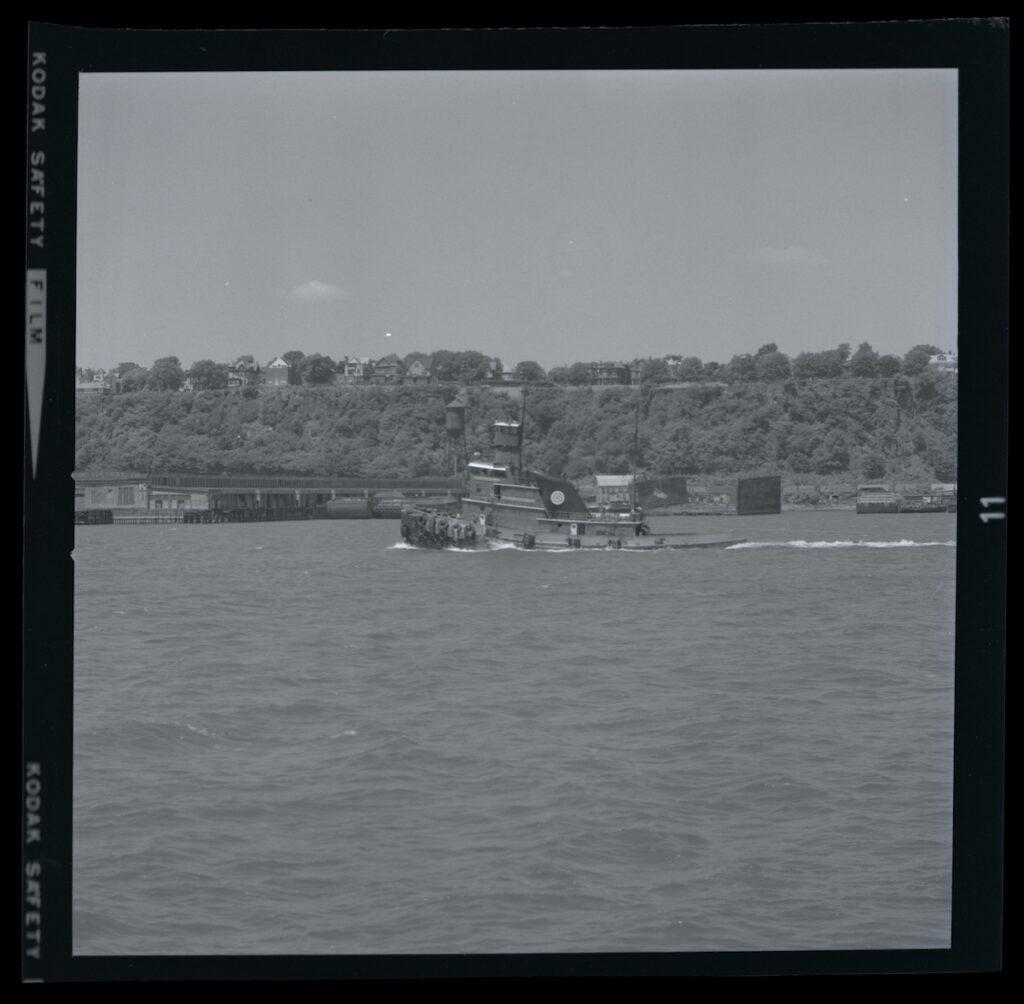
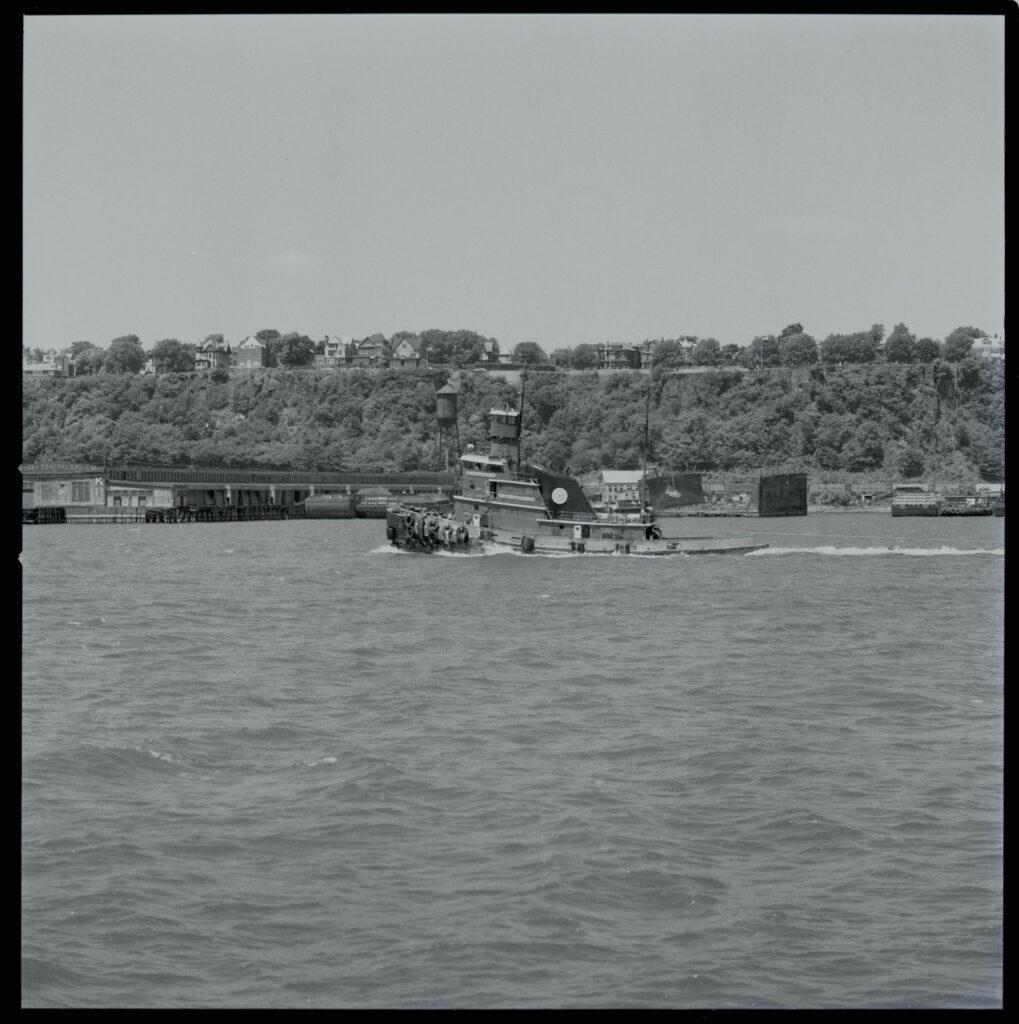
Steven Lang (American, born 1939), John A. Downs, July 4, 1971. 120 mm Kodak Safety Film. Gift of Stan Willhight 2024.001.0065
Left: Negative digitized without the film area guide
Right: Negative digitized with the film area guide
When I couldn’t identify the location, I then turned to identifying the actual tugboat. When I scanned the negative, I could see signs hanging from the handrails and on the side of the pilothouse that were supposed to indicate the tugboat’s name. Unfortunately, the image was out of focus and the angle of the sun obscured the name. I tried to use all of the information found in the photo to identify this particular tugboat. Luckily, I was familiar with the logo on the tugboat: Great Lakes Dredge & Dock Company (GLDD).
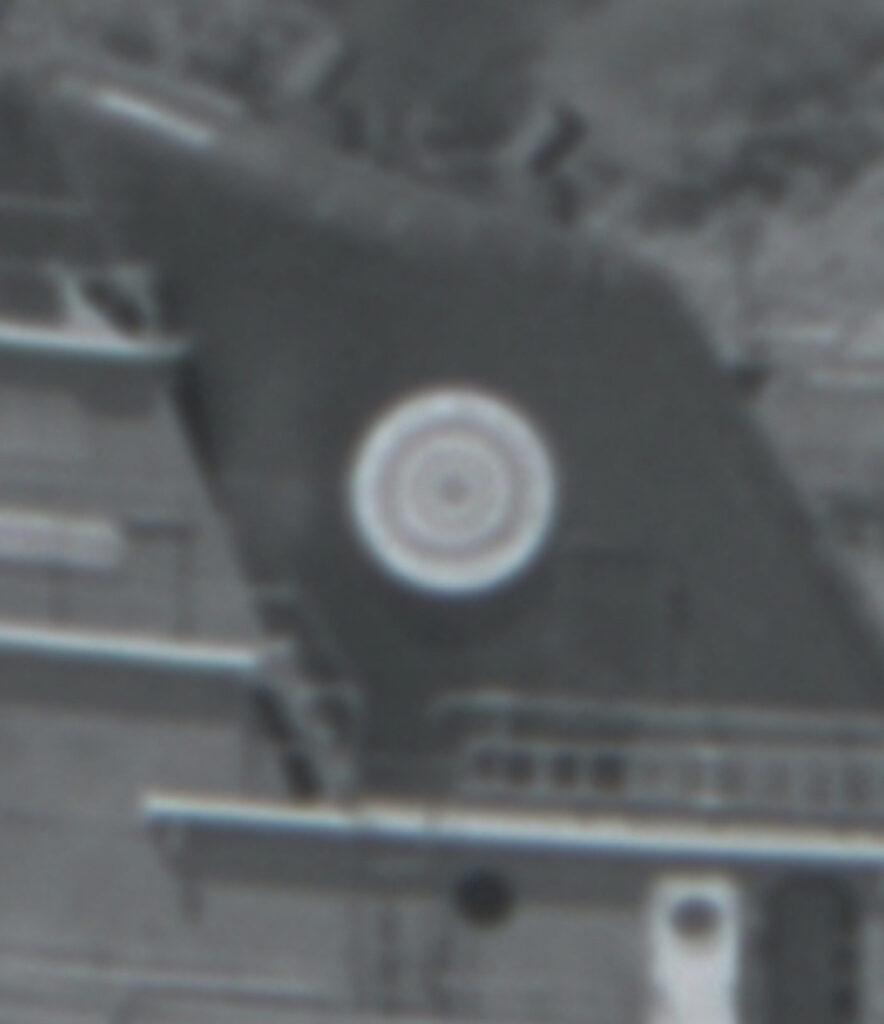
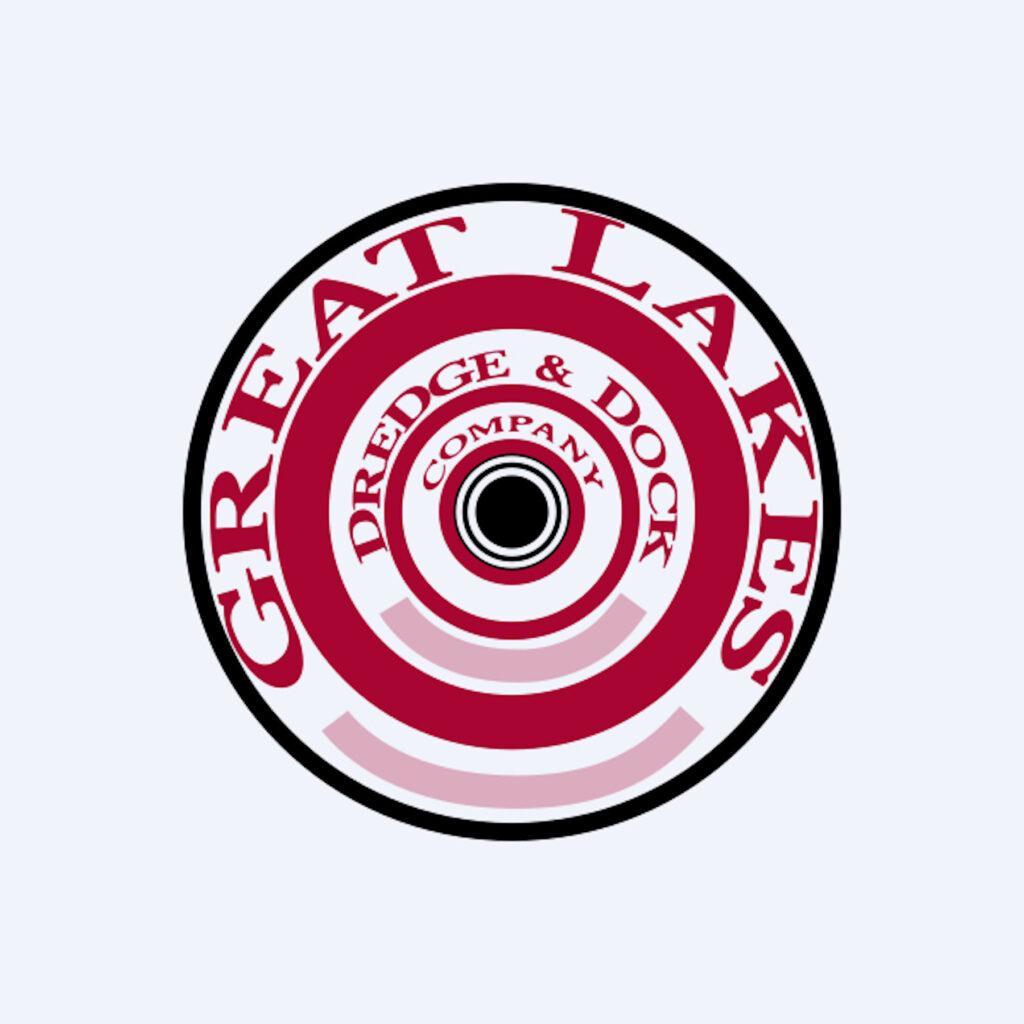
Left: Steven Lang (American, born 1939), John A. Downs, July 4, 1971. 120 mm Kodak Safety Film. Gift of Stan Willhight 2024.001.0065. Detail of the Great Lakes Dredge and Dock logo on the tugboat
Right: Courtesy of Great Lakes Dredge & Dock Corporation (GLDD)
I wrote down every tugboat that GLDD had ever owned and started eliminating tugboats based on information I could find. I knew that most of the images in the Stephen Lang Tugboat Negative collection were taken around the 1970s, so I removed any tugboats that were built after the 1990s from my list, as well as any tugboats that were sold, retired, or destroyed before the 1960s. I eliminated more tugboats from the list based on their appearance, since not every tugboat has an upper wheelhouse. I was left with seven potential tugboats from the original list of forty-three.
When I re-scanned the negative of the unidentified tugboat with the film area guide, I could finally see the name of the tugboat better. It was still a little hard to decipher, but looking through the list of potential tugboats, I was able to confirm that the tugboat in the negative is “John A. Downs” and that it was one of the seven tugboats I had narrowed the list down to. That confirmed that my research was working in the right direction, and that even if you don’t have all the information you can still narrow down your guesses until you can figure out the answer.
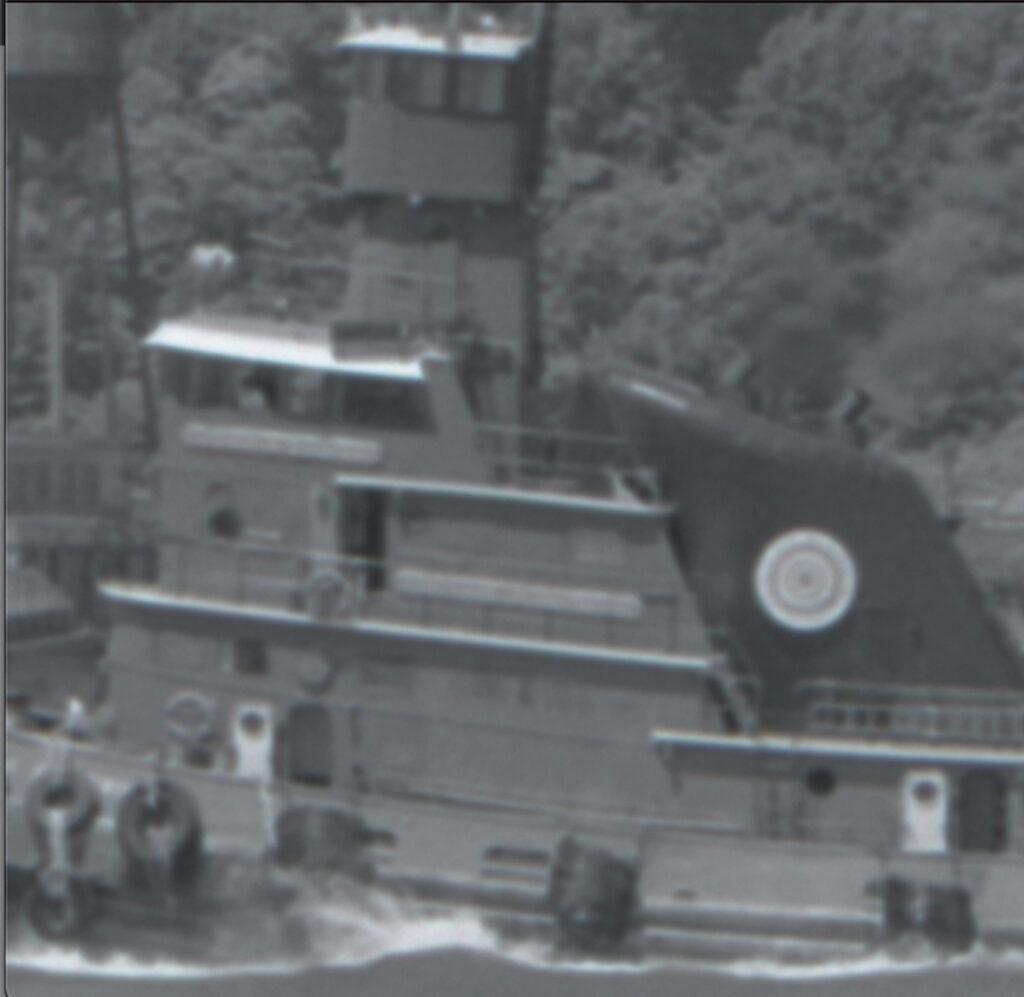
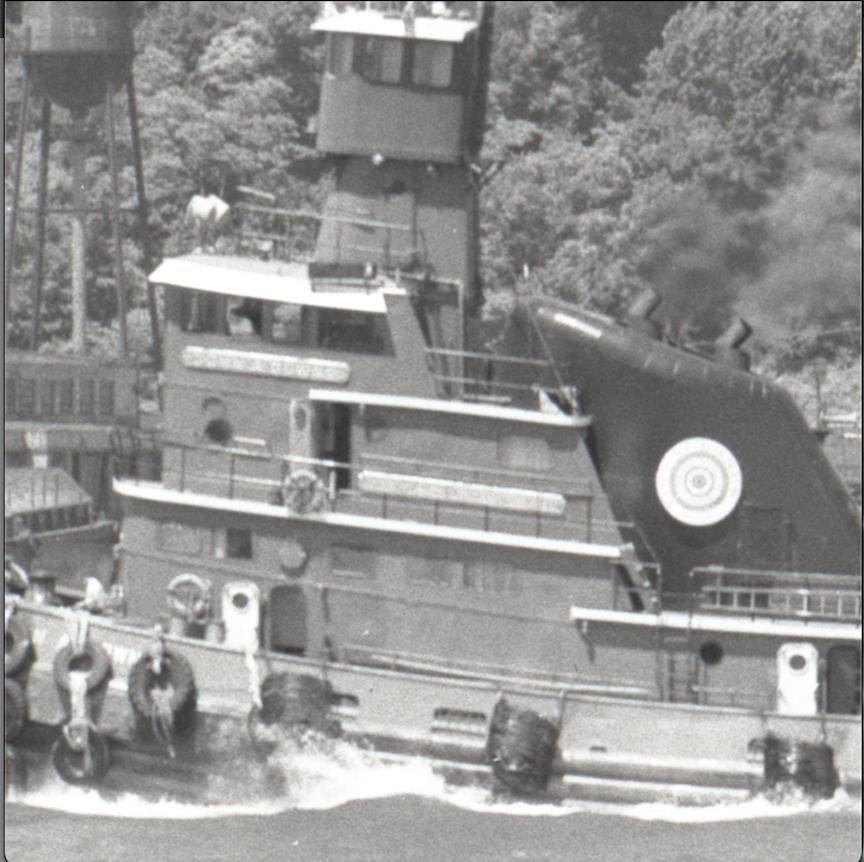
Steven Lang (American, born 1939), John A. Downs, July 4, 1971. 120 mm Kodak Safety Film. Gift of Stan Willhight 2024.001.0065. Detail of the name of the vessel on the railing.
Left: Negative digitized without the film area guide
Right: Negative digitized with the film area guide
Panorama Puzzle Pieces
While cataloging the collection, I noticed that a couple of pictures were seemingly taken from the same position, looking from Manhattan towards Brooklyn just south of the Brooklyn Bridge. At first, it was just two images that were similar, but as I continued cataloging there ended up being six images that fit into this group. I started looking at the details of the images, trying to find out more information. Some of the images within the series of pictures were not labeled with a date, giving me the impression that they were all taken on the same day.
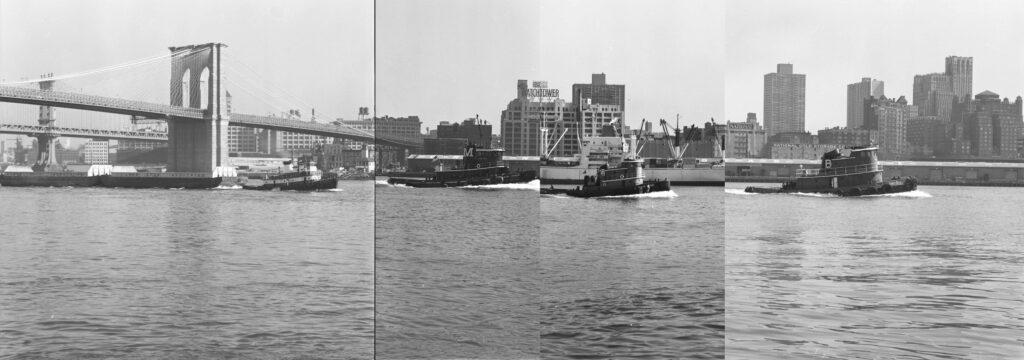
Panorama created by Jasmine Mukai-McGreen by digitally stitching together four different negatives from the Stephen Lang Negative Collection
The images fit together so well and slightly overlap, so it looks like Stephen Lang was standing in the same position and photographing the tugboats as they passed by. Some images were more zoomed in and had different angles, but using photo editing software I was able to piece together the images to create a beautiful view of the Brooklyn skyline and of the tugboats. I couldn’t confirm if the images were taken on the same day, but it was so fun to create this collage and see a panorama that was made of all the pictures.
Not Only Negatives: Additional types of photography in the Museum’s collections
The Museum’s photography collections assist in telling the story of photography across three centuries, helping us understand why and how pictures are made, and the important role the medium has played in shaping visual cultures across the world. The earliest photograph in the collection is a crystal porcelain-type dated ca. 1873–1876 depicting Mr. Edmund Seaman (1832–1888) when he was the Captain of the Port of New York. Since then, the collection has grown to encompass works representing many different photographic techniques, including lantern slides and glass plates negatives, daguerreotypes, cartes de visite and cabinet cards, stereographic cards, as well as silver gelatin and inkjet prints.
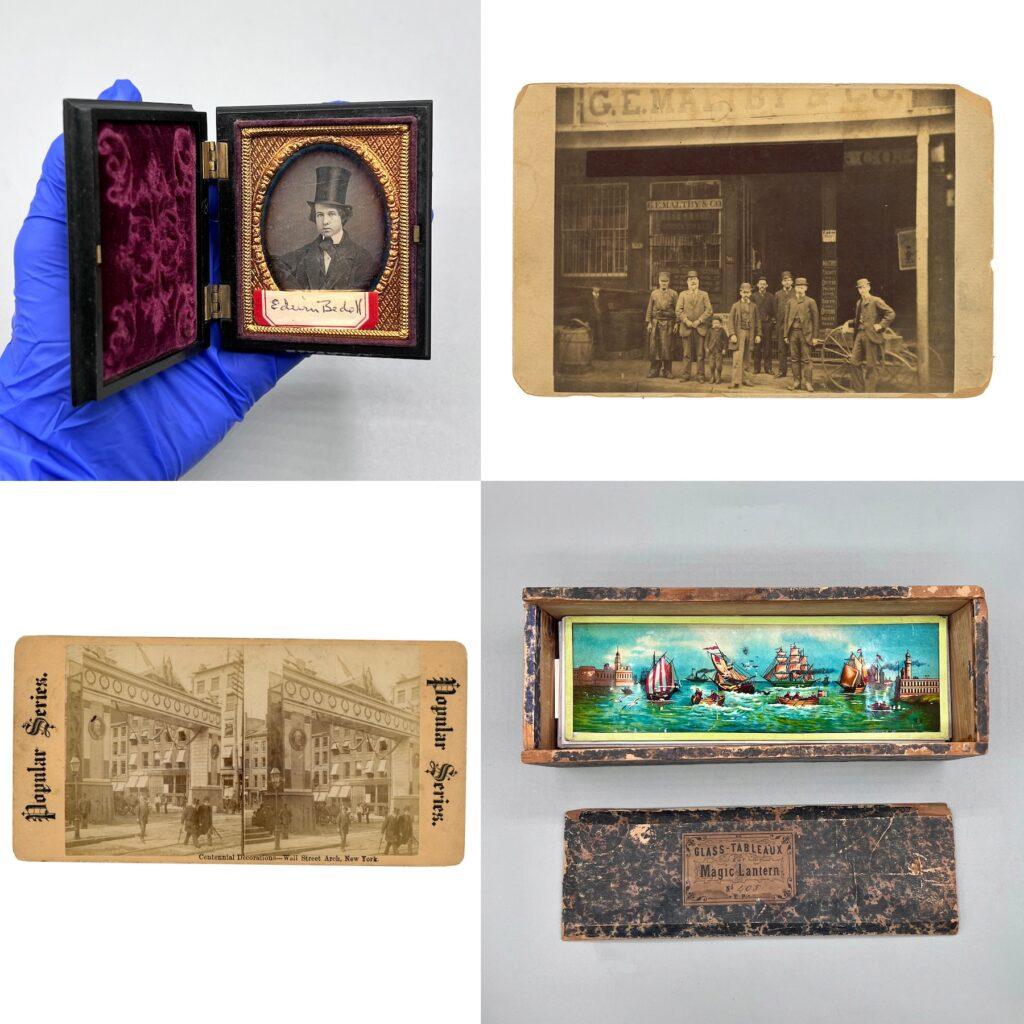
Top Left: Daguerreotype of Edwin Bedell, ca. 1860. Gift of Ann Caroline Rivers, Great Granddaughter of Edwin F. Bedell 2002.039.0037
Top Right: George W. Heppner (active ca. 1885). [Employees of G.E. Maltby & Co. standing in front of 39-41 Harrison Street], ca. 1885. Gift of Lucius U. Maltby 1983.098.0002
Bottom Left: Popular Series, publisher. Centennial Decorations-Wall Street Arch, New York, ca. 1889. South Street Seaport Museum, 2005.013.0008
Bottom Right: Box of Magic Lantern Glass Slides, n.d. Seamen’s Bank for Savings Collection 1991.074.0069
One of the few types of photographs that you won’t often see in the Seaport Museum, and many other museums collections is cyanotype. Cyanotypes are essentially blueprints, and are sensitive to light. While cyanotypes degrade extremely easily when exposed to light, they can often regenerate when in the dark, with lots of airflow. However, if cyanotypes are exposed to alkaline conditions (pH 7–14) or liquids, it can result in permanent damage. Most other items in museums prefer an alkaline environment, which can make storing cyanotypes more difficult unless the museum can have a dedicated area for a less alkaline environment, which is usually not possible.
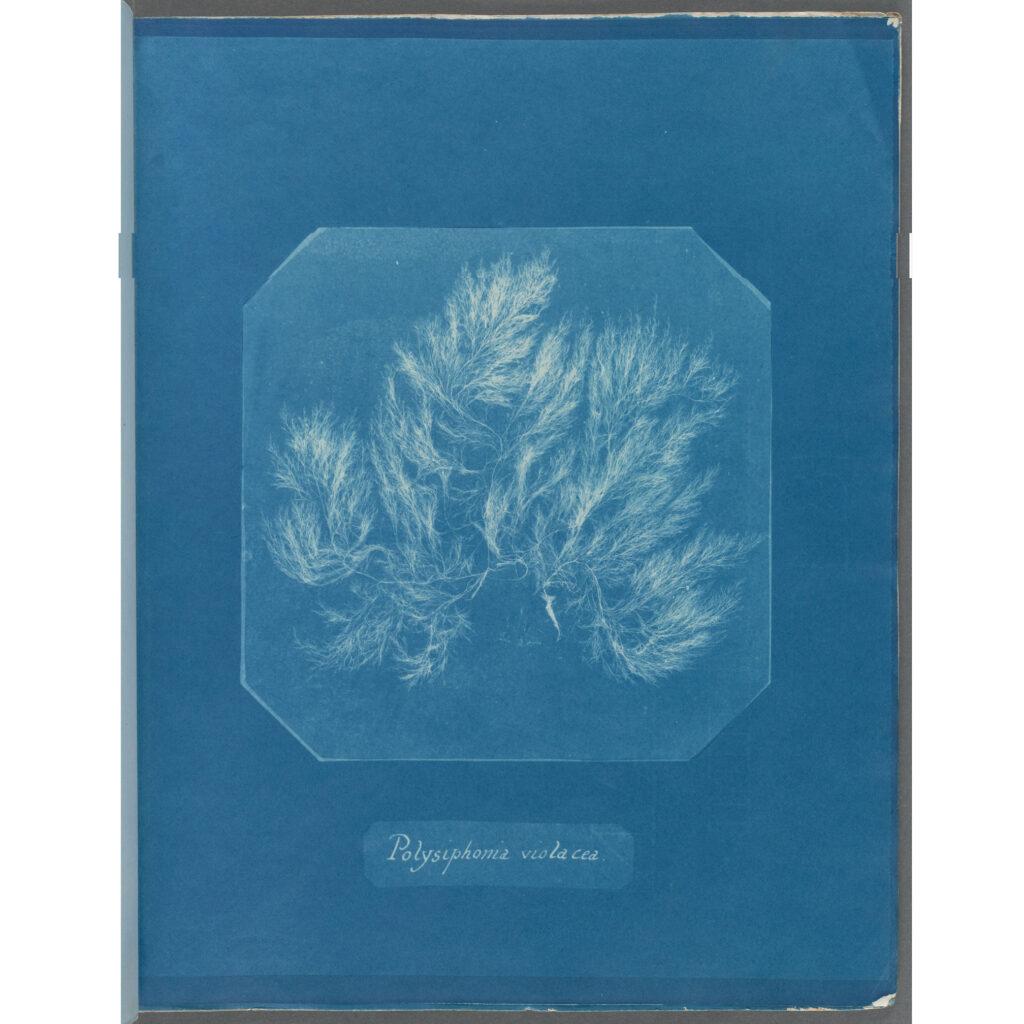
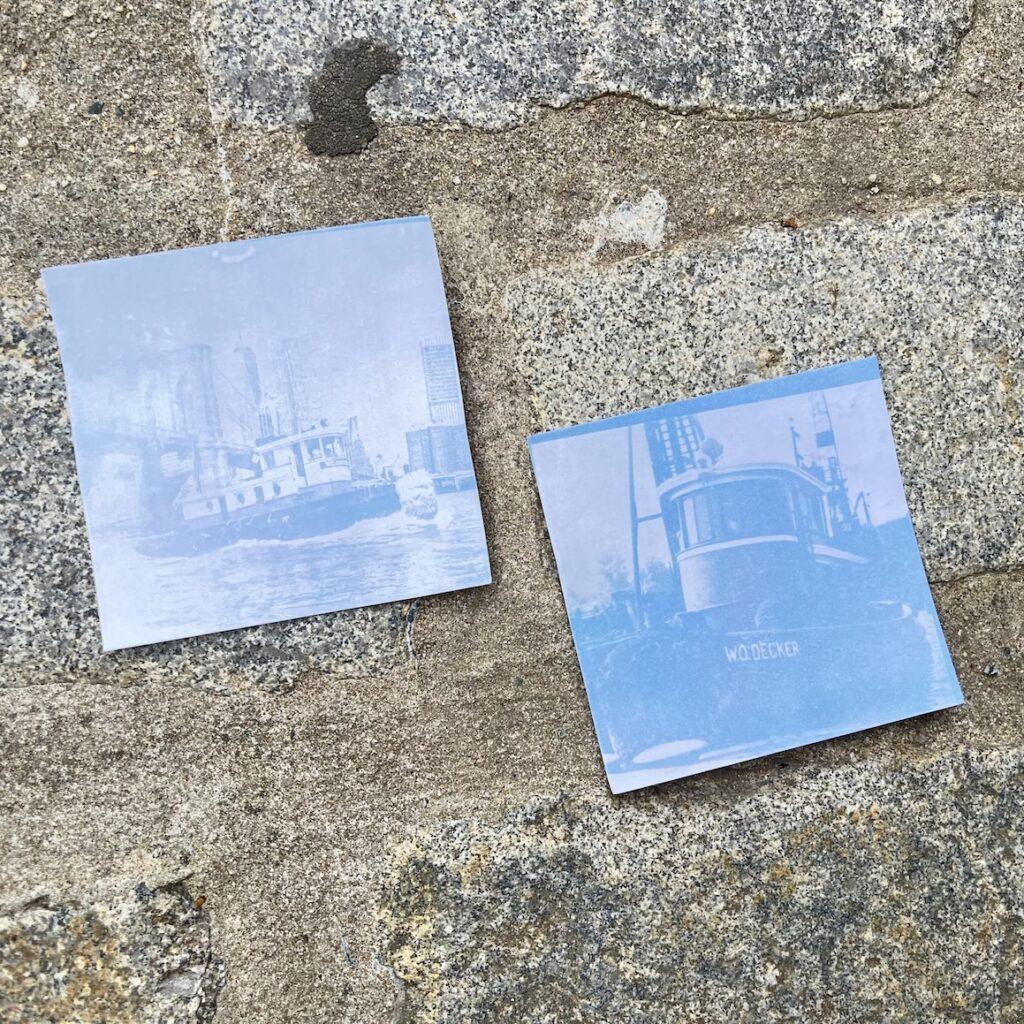
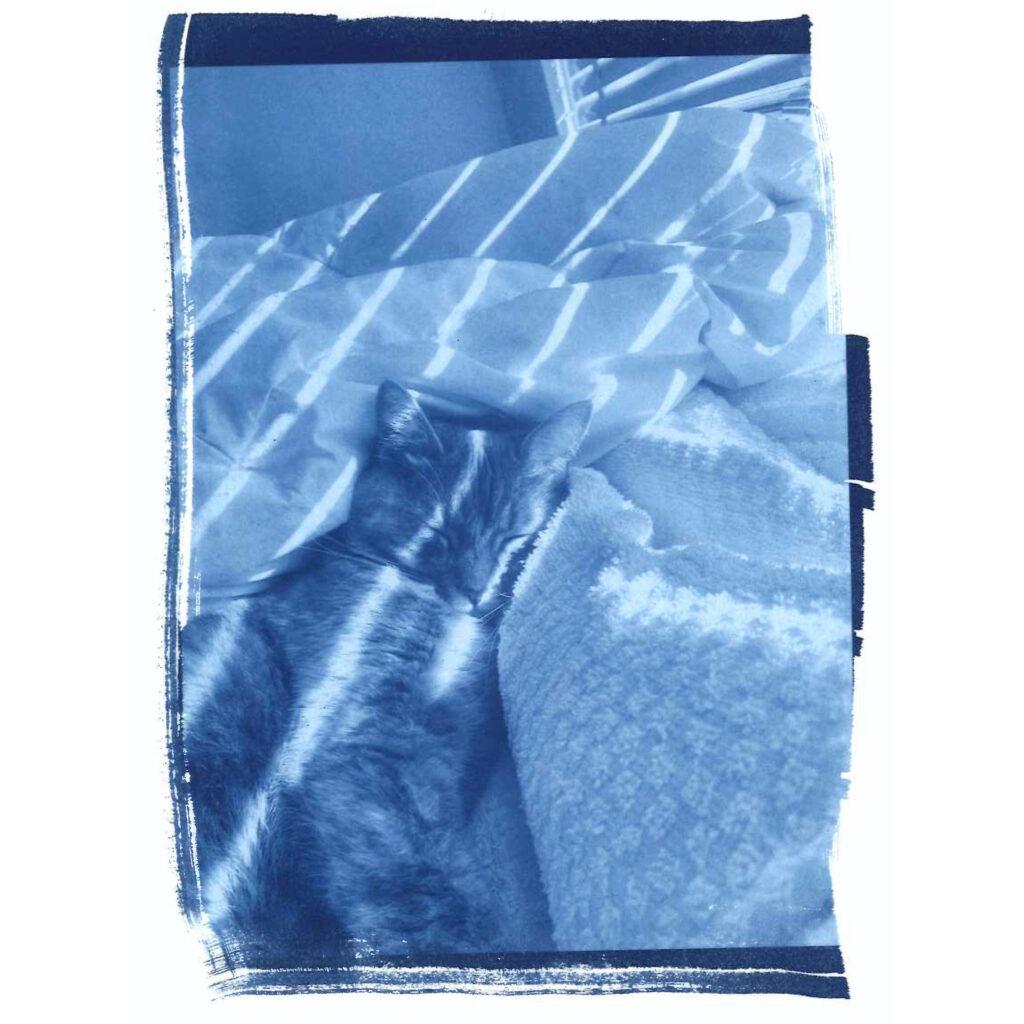
Left: Spencer Collection, The New York Public Library. “Polysiphonia violacea” The New York Public Library Digital Collections. 1843-10.
Center: Test for a Family Cyanotype Activity at the Seaport Museum.
Right: Jasmine Mukai-McGreen, Fenn Sleeping in the Sun, January 30, 2022. Cyanotype.
Cyanotype is a simple and inexpensive way to get into printing photos, since the materials are readily available and the image is quick to develop. There are several different ways to print cyanotype: the simplest is buying cyanotype paper, which is pre-treated with chemicals—all you have to do is place your negative or items on top of the paper and place it in the sun[4]There are also two more traditional cyanotype printing processes: the original formula, which has largely stayed the same since 1842, was discovered by Sir John Herschel, and the other was an … Continue reading.
If you want to try printing cyanotypes, come participate in one of the Seaport Museum’s free Family Activity Weekends workshops every weekend this June. Using archival images of New York Harbor and street scenes, you will be able to make your own prints and take them home to enjoy. Cyanotype is also very easy and inexpensive to replicate at home.
The Investigation Is Not Over
At the start of this project, I thought I would be finished well before the end of the internship semester. I was quickly proved wrong: once I thought I had finished one part of the project, Elena and I thought of another idea that would improve the quality of the images and overall understanding of the collection. I rescanned the negatives multiple times using different methods to make the scans sharper; we went into the archives to find out more information about the tugboats in this collection; I used different resources and books to discover the history of each tugboat.
It quickly went from a couple-week project to a whole-semester-long project. I enjoyed taking my time to fully finish cataloging and rehousing the whole collection. I think this demonstrates that even a deceptively simple project can snowball into a larger one and, if allowed the time and freedom to work on one project, the archival team can find out so much interesting information about the items.
Additional readings and resources
“History of Kodak”, Kodak.
On the Hawser. A Tugboat Album by Steven Lang and Peter H. Spectre, Down East Books, Camden, Maine, 1980.
Tugboats of New York. An Illustrated History by George Matteson, published by New York University Press, New York and London, 2005.
McAllister Towing. 150 Years of Family Business by Stephenie Hollyman, published by Carpe Diem Books, Portland, Oregon, 2015.
Cyanotypes: Photography Blue Period by Nancy Burns, Worcester Art Museum, January 16, 2016.
“How Daguerreotype Photography Reflected a Changing America” by Ryan P. Smith, Smithsonian Magazine, June 18, 2018.
References
| ↑1 | A finding aid is a device that collections use to explain why certain decisions were made when processing a collection; this can help future archivists make more informed decisions about how the collection is displayed or reorganized. “Introduction to Archival Research: What is a Finding Aid?” University of Colorado Boulder, May 23, 2025 |
|---|---|
| ↑2 | Plastic sleeves for the most part should not be used when storing photographs. There can be issues with the plastic being acidic, which can trap moisture and create a microenvironment that can affect the photo, and in extreme cases, plastic can adhere to the photo. “5.5 Storage Enclosures for Photographic Materials” Northeast Document Conservation Center, 2018 |
| ↑3 | Acidic materials contribute to degradation of objects in museums, most objects do best in neutral to alkaline environments. To best curb the degradation we use special material for housing that is less acidic. “The Deterioration and Preservation of Paper: Some Essential Facts” Library of Congress |
| ↑4 | There are also two more traditional cyanotype printing processes: the original formula, which has largely stayed the same since 1842, was discovered by Sir John Herschel, and the other was an improvement of the formula by Mike Ware in 1994. Herschel’s formula has some downsides including longer development time (~30mins), migration of color, and susceptibility to mold. The formula by Ware improved the development time (~4mins), stopped color migration, and became mold resistant, but has its own disadvantages including increased preparation time, and more expensive materials. Cyanotypes: Photography Blue Period by Nancy Burns, Worcester Art Museum, January 16, 2016. |
